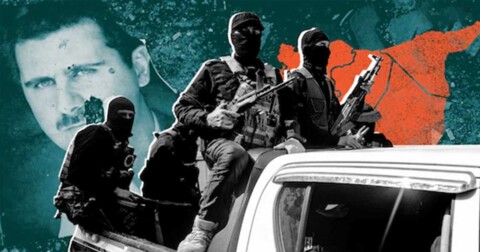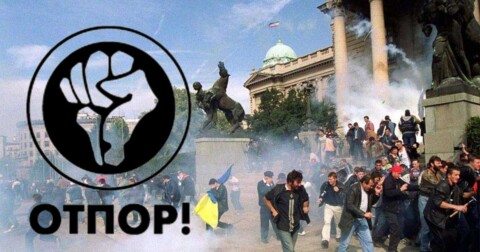Amid the waves of astonishing events that wash over the modern world each day, few could have imagined until recently that the cohesion of the West would begin to erode so rapidly and dramatically. Decadence and internal issues — including an identity crisis and growing social tensions — did not initially suggest systemic flaws or a multidimensional decline. Still less did they point to fractures that are now widening and deepening, leading toward centrifugal forces and the irreversible fragmentation of the so-called “Collective West.”
THE MULTIPOLARITY NEOLOGISM: “THE COLLECTIVE WEST”
Authorship of the relatively new term “Collective West” is attributed to the “gray cardinal” of modern Russian politics, Vladislav Surkov. The term refers to the United States and a group of its satellite states — Canada, the European members of NATO and the EU, as well as those that are not formally part of them, and the former British colonies where the native populations were almost wiped out — Australia and New Zealand, even though they are not geographically “in the West.” The same applies to East Asian countries such as Japan and South Korea, which remain firmly under the American “palm.”
Earlier terms like “the political West,” “the civilizational West,” or simply “the West” have continued to exist. Initially, the term referred only to Western Europe, but with the rise of the United States and the expansion of its transatlantic influence, a broader notion prevailed — that of a thalassocratic community linking Anglo-America and Roman Catholic–Protestant Europe. They are integrated by the North Atlantic, which, as a “central ocean,” mirrors the gravitational and geopolitical role of a central continental core.
Using the analogy of Empire vs. Barbarians, the West’s proud and exclusionary self-perception is aptly captured by the often-used expression “the West and the Rest.” When did this notion become particularly pronounced, and on what does it rest, other than on the propagandistic — and deeply misleading — conflation of belonging to the West with belonging to Civilization itself?
Its origins reach far back — to pre-Antiquity, then to the false exclusivism of the Roman Catholic heresy, followed by colonialism and imperialism. Yet the modern elitist and supremacist character of the West was truly forged during the Cold War, thanks to the geopolitical and geostrategic dominance it achieved in World War II. From that foundation arose the other dimensions of its supremacy: ideological, economic, technological, cultural, scientific, and artistic — in short, comprehensive dominance. Even in the military context, though the West acknowledged an ongoing “arms race,” it continued to emphasize its own primacy.
THE GEOPOLITICAL ANACHRONISM OF THE “COLLECTIVE WEST”
The instruments of bloc competition in Europe — led by the United States on one side, and the East under the Soviet Union on the other — were NATO as a military-security structure and the European Union (in its earlier forms) as the political-economic “reverse side of the same coin.” There is no doubt that these were “organizations of Western civilization,” as Samuel Huntington rightly argued. The same renowned theorist of civilizations considered the inclusion of countries belonging to the other, Orthodox civilization in these alliances an anomaly — one that would cost them dearly, as it could turn them into divided, disoriented, even schizophrenic nations.
After the American triumph in the Cold War and the implosion of its rival, NATO and the EU — seemingly illogically — “survived.” During the transitional period of global order, the so-called “unipolar moment,” they became tools of the West’s eastward expansion and instruments of pressure against Russia. Yet it soon became evident that, as relics of bipolarism, they were becoming obsolete and inefficient — especially with Russia’s recovery, China’s rise, and the emancipation of other global players. Moreover, even the leaders of the major NATO and EU member states openly admitted that these alliances were “clinically dead” and “on the verge of collapse.”
Although both organizations continued to attempt to project an image of Western unity, this facade achieved less and less real success. In reality, they barely managed to “contain the damage” caused by internal disunity — even when facing their “arch-enemy,” Russia, as it launched its “special military operation” in the Ukrainian theater. That operation was, in essence, an effort to prevent the “Collective West” from abducting Ukraine and forcibly annexing it to its own sphere of interest.

THE PITCHER GOES TO THE WELL UNTIL IT BREAKS
The “fault lines” appeared much earlier but became fully visible with Brexit, when one of the EU’s leading trio — the United Kingdom — decided by referendum in 2016 to leave the Union, completing the process in 2020. Naturally, the enlargement of the “common European house” with the accession of Croatia in 2013 did not carry the same “specific weight” as the loss of Great Britain just a few years later. Although Brussels pretended that nothing dramatic had happened — since “Proud Albion” did not also withdraw from NATO and therefore remained a part of the “Collective West” — the EU never recovered. On the contrary.
Other member states became increasingly emboldened to say no whenever something did not suit them, especially regarding Brussels’ and Strasbourg’s centralist attempts and their prolonged assaults on the remnants of sovereignty in weaker countries. The idea of a “common European policy” encountered insurmountable barriers, clashing with the diverse national interests not only among the so-called old members but also between them and the newer ones admitted after the fall of the Berlin Wall. An unquestionable indicator of this “indiscipline” is the fact that five EU states still refuse to recognize “Kosovo” as an independent country — a challenge the EU has been unable to overcome to this day.
EU-skepticism has continued to grow unstoppably, while the idea of national sovereignty has rapidly returned to the forefront. The renaissance of the concept of a “Europe of nations” has spread not only through intellectual circles but across all layers of society. The alienation and inefficiency of EU institutions in addressing critical issues — such as the controversial COVID-19 pandemic response, the migrant influx, energy supply, economic competitiveness, overregulation, bureaucratization, and overall loss of credibility — can no longer be concealed by propaganda. Hungary has long been labeled the “rotten apple in the basket of healthy ones,” and now Slovakia joins it. Italy is increasingly discontented, and the inertia of separatism and fragmentation threatens Belgium, Spain, Cyprus, and Romania alike.
NOT EVEN NATO IS A LIFELINE ANYMORE
But doesn’t the compactness of the “Collective West” still guarantee NATO’s strength? Hasn’t the “Russian scarecrow” and the need to “find work” in Ukraine made it (once again) necessary, with “fear of Russia” producing blind obedience among the forward European states? How else to interpret the Alliance’s expansion to Finland in 2023 and Sweden in 2024? The reality, however, is quite different.
When the issue of increasing contributions to the Alliance’s budget was raised, dissenting voices suddenly multiplied, since that already meant the end of prosperity — slower economic growth and even recession. There is no agreement on strengthening the so-called “European component,” and even less on creating a separate European army. Even military aid to the Ukrainian army has long been a source of division.
All of this might still be manageable if the “alpha and omega” of the North Atlantic Alliance — the United States — did not itself begin to question its own financial role (read: the very survival of NATO). Washington has started releasing “trial balloons” about reducing its involvement in European affairs as a whole. It increasingly bypasses the European “headquarters” and resolves disputes directly with individual countries and leaders. The recent cases of Dodik and Orbán are telling examples.
Is this the beginning of the dismantling of the United States’ transatlantic stronghold — and the splitting of the “Collective West” into two parts, one American and the other European?





